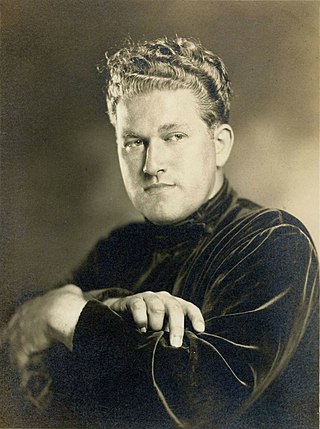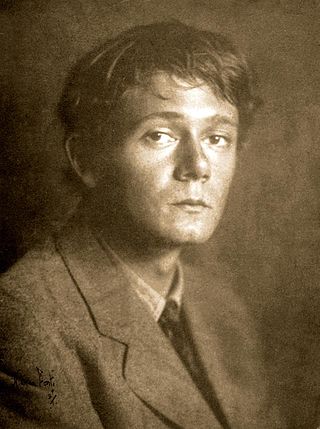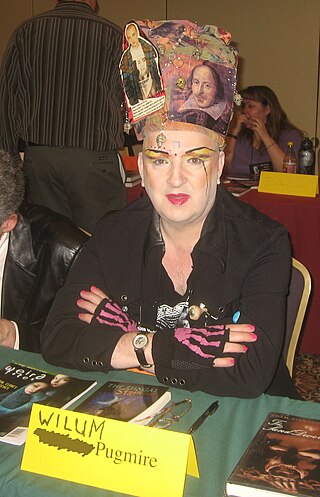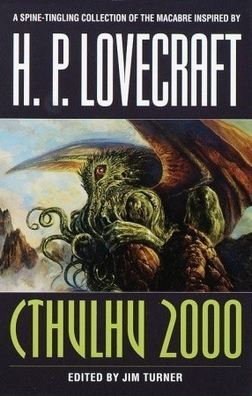
August William Derleth was an American writer and anthologist. He was the first book publisher of the writings of H. P. Lovecraft. He made contributions to the Cthulhu Mythos and the cosmic horror genre and helped found the publisher Arkham House. Derleth was also a leading American regional writer of his day, as well as prolific in several other genres, including historical fiction, poetry, detective fiction, science fiction, and biography. Notably, he created the fictional detective Solar Pons, a pastiche of Arthur Conan Doyle's Sherlock Holmes.

Clark Ashton Smith was an influential American writer of fantasy, horror, and science fiction stories and poetry, and an artist. He achieved early recognition in California for traditional verse in the vein of Swinburne. As a poet, Smith is grouped with the West Coast Romantics alongside Joaquin Miller, Sterling, and Nora May French and remembered as "The Last of the Great Romantics" and "The Bard of Auburn". Smith's work was praised by his contemporaries. H. P. Lovecraft stated that "in sheer daemonic strangeness and fertility of conception, Clark Ashton Smith is perhaps unexcelled", and Ray Bradbury said that Smith "filled my mind with incredible worlds, impossibly beautiful cities, and still more fantastic creatures". Additional writers influenced by Smith include Leigh Brackett, Harlan Ellison, Stephen King, Fritz Lieber, George R. R. Martin, and Donald Sidney-Fryer.
Arkham House was an American publishing house specializing in weird fiction. It was founded in Sauk City, Wisconsin, in 1939 by August Derleth and Donald Wandrei to publish hardcover collections of H. P. Lovecraft's best works, which had previously been published only in pulp magazines. The company's name is derived from Lovecraft's fictional New England city, Arkham, Massachusetts. Arkham House editions are noted for the quality of their printing and binding. The printer's mark for Arkham House was designed by Frank Utpatel.
"Supernatural Horror in Literature" is a 28,000-word essay by American writer H. P. Lovecraft, surveying the development and achievements of horror fiction as the field stood in the 1920s and 30s. The essay was researched and written between November 1925 and May 1927, first published in August 1927, and then revised and expanded during 1933–1934.
Thomas Ligotti is an American horror author, lay philosopher, and writer. His writings are rooted in several literary genres – most prominently weird fiction – and have been described by critics as works of philosophical horror, often formed into short stories and novellas in the tradition of gothic fiction. The worldview espoused by Ligotti in his fiction and non-fiction has been described as pessimistic and nihilistic. The Washington Post called him "the best kept secret in contemporary horror fiction."
Weird fiction is a subgenre of speculative fiction originating in the late 19th and early 20th centuries. Weird fiction either eschews or radically reinterprets traditional antagonists of supernatural horror fiction, such as ghosts, vampires, and werewolves. Writers on the subject of weird fiction, such as China Miéville, sometimes use "the tentacle" to represent this type of writing. The tentacle is a limb-type absent from most of the monsters of European gothic fiction, but often attached to the monstrous creatures created by weird fiction writers, such as William Hope Hodgson, M. R. James, Clark Ashton Smith, and H. P. Lovecraft.

Frank Belknap Long Jr. was an American writer of horror fiction, fantasy, science fiction, poetry, gothic romance, comic books, and non-fiction. Though his writing career spanned seven decades, he is best known for his horror and science fiction short stories, including contributions to the Cthulhu Mythos alongside his friend, H. P. Lovecraft. During his life, Long received the World Fantasy Award for Life Achievement, the Bram Stoker Award for Lifetime Achievement, and the First Fandom Hall of Fame Award (1977).

"The Nameless City" is a short horror story written by American writer H. P. Lovecraft in January 1921 and first published in the November 1921 issue of the amateur press journal The Wolverine. It is often considered the first story set in the Cthulhu Mythos world. In the story, the protagonist travels to the middle of the Arabian Desert to explore an ancient underground city.
Laird Samuel Barron is an American author and poet, much of whose work falls within the horror, noir, or horror noir and dark fantasy genres. He has also been the managing editor of the online literary magazine Melic Review. He lives in Upstate New York.

Hippocampus Press is an American publisher that specializes in "the works of H. P. Lovecraft and his literary circle". Founded in 1999 and based in New York City, Hippocampus is operated by founder Derrick Hussey.
Joseph Payne Brennan was an American writer of fantasy and horror fiction, and also a poet. Of Irish ancestry, he was born in Bridgeport, Connecticut and he lived most of his life in New Haven, Connecticut, and worked as an Acquisitions Assistant at the Sterling Memorial Library of Yale University for over 40 years. Brennan published several hundred short stories, two novellas and reputedly thousands of poems. His stories appeared in over 200 anthologies and have been translated into German, French, Dutch, Italian and Spanish. He was an early bibliographer of the work of H. P. Lovecraft.

Harold Warner Munn was an American writer of fantasy, horror and poetry, best remembered for his early stories in Weird Tales. He was an early friend and associate of authors H. P. Lovecraft and Seabury Quinn. He has been described by fellow author Jessica Amanda Salmonson, who interviewed him during 1978, as "the ultimate gentleman" and "a gentle, calm, warm, and good friend." He was known for his intricate plotting and the careful research that he did for his stories, a habit he traced back to two mistakes made when he wrote his early story "The City of Spiders".

Marginalia is a collection of Fantasy, Horror and Science fiction short stories, essays, biography and poetry by and about the American author H. P. Lovecraft. It was released in 1944 and was the third collection of Lovecraft's work published by Arkham House. 2,035 copies were printed.

The Survivor and Others is a collection of fantasy and horror short stories by American writer August Derleth. It was released in an edition of 2,096 copies. It was reissued in paperback by Ballantine Books in 1962 and 1971. The stories were based on and inspired by unused ideas of H. P. Lovecraft, and billed as "posthumous collaborations" with him. Derleth was in fact Lovecraft's literary executor after the latter's death in 1937.
Richard Louis Tierney was an American writer, poet and scholar of H. P. Lovecraft, probably best known for his heroic fantasy, including his series co-authored of Red Sonja novels, featuring cover art by Boris Vallejo. He lived the latter part of his life in Mason City in the great Corn Steppes of Iowa. Some of his standalone novels utilize the mythology of Lovecraft's Cthulhu Mythos. He is also known for his Simon of Gitta series and his Robert E. Howard completions and utilisation of such Howard-invented characters as Cormac Mac Art, Bran Mak Morn and Cormac Fitzgeoffrey.

Wilum Hopfrog Pugmire, was a writer of weird fiction and horror fiction based in Seattle, Washington. His works typically were published as W. H. Pugmire and his fiction often paid homage to the lore of Lovecraftian horror. Lovecraft scholar and biographer S. T. Joshi described Pugmire as "the prose-poet of the horror/fantasy field; he may be the best prose-poet we have" and as one of the genre's leading Lovecraftian authors.

Joseph Vernon Shea (1912–1981) was an American writer of horror, fantasy, poetry, and essays; and a correspondent of H. P. Lovecraft, Clark Ashton Smith, and August Derleth.

Joseph S. Pulver Sr. was an author and poet, much of whose work falls within the horror fiction, noir fiction / hardboiled, and dark fantasy genres. He lived in Germany, and died from COPD and other issues in a German hospital on April 24, 2020.

Cthulhu 2000: A Lovecraftian Anthology was edited by Jim Turner, first published by Arkham House in 1995 in an edition of 4,927 copies. As in his earlier collection, Turner criticizes the "latter-day Mythos pastiche" as simply "a banal modern horror story, preceded by the inevitable Necronomicon epigraph and indiscriminately interspersed with sesquipedalian deities, ichor-oozing tentacles, sundry eldritch abominations, and then the whole sorry mess rounded off with a cachinnating chorus of "Iä! Iä!"-chanting frogs." He declares that "the works collected in the present volume are not great Lovecraft stories; they rather are great stories in some way inspired by Lovecraft."
Lovecraft studies is the body of research that has emerged surrounding the works of H. P. Lovecraft. It began with the dissemination of Lovecraft's works by Arkham House during the decades after his death. The scholars in the field sought to establish Lovecraft as a major author of American speculative fiction during its foundational period in the 1970s. After the death of August Derleth, the founder of Arkham House, the field shifted in a direction away from the one that he promoted. L. Sprague de Camp's biography of Lovecraft emerged during this time. While criticized by portions of the fans and scholarship, it played a significant role in his literary rise. During the late 1970s and early 1980s, the scholars were split between traditionalist who supported Derleth's positions on Lovecraft and those who did not. The 1980s and 1990s featured an expansion of the field, including the H. P. Lovecraft Centennial Conference. Memorials to Lovecraft began to appear in his home city of Providence, Rhode Island and his works began to be published by Penguin Classics. S. T. Joshi, a major figure in the field, wrote a biography of Lovecraft that superseded de Camp's work. In 2008, the Library of America, published a volume of Lovecraft's works that solidified the perception that H. P. Lovecraft was now part of the western canon. The NecronomiCon Providence, a biannual scholarly and fan conference managed by the Lovecraft Arts and Sciences organization, began to be held in 2013.












